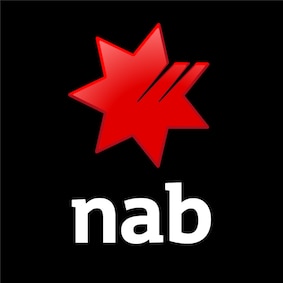Imagine a world where every industry thrives on diverse perspectives and innovative business ideas. Unfortunately, in Australia, gender representation in the workforce is still a significant challenge.
However, there is recent progress being made. The 2025 Status of Women report card reveals significant progress in gender equality in Australia. The national gender pay gap has decreased to 11.9%, a notable reduction from the record-high of 18.6% recorded a decade ago. Additionally, Australia has improved its global standing in gender equality, now ranked 24th, up from 26th last year and a remarkable leap from 43rd in 2023.
This article shines a spotlight on five industries where women are underrepresented but are making remarkable strides and contributions.
Let's explore these sectors and discover how women are breaking barriers and paving the way for future generations.
1. Mining, building and construction
The mining, building and construction industry is one of the largest sectors in Australia, with 1.32 million workers across 445,000 businesses by the end of 2023, according to Master Builders. Small to medium enterprises represent 98% of those businesses. This industry fuels economic growth, innovation and job creation. For every $1 billion dollars this industry makes, $3 billion is returned to the Australian economy.
Despite its size and importance, women are still underrepresented in this sector. They make up only 17.5% of the mining workforce and 12.9% in construction. However, the proportion of women in the mining and resources workforce has increased from 18.8% to 24.8% over the last decade.
The way work is performed in this industry provides plenty of opportunities, whether it’s a career as a tradesperson, working in management or starting a business. Jobs can be on-site, off-site or a bit of both. A career in building and construction can be in the residential, commercial or civil sectors - the possibilities are endless.
There is a limit, however, to how successful the industry can be. Acute workforce shortages are impacting Australia’s urban environment needs. This doesn’t just affect housing but all the infrastructure that underpins and supports the community.
Programs and apprenticeships are encouraging more women to enter these trades. For example, the Chamber of Minerals and Energy of Western Australia (CMEWA) reports positive signs for industry diversity in the future.
2. Banking and financial services
The banking and finance sector has undergone a profound transformation over the last 25 years. Once a male-dominated industry, banking and finance has seen a steady increase in female representation at all levels. However, while progress is evident in certain sectors, challenges remain in others and the journey towards true equity is far from over according to Women in Banking and Finance (WiBF) CEO Stephanie Girard.
WiBF, a not-for-profit membership association dedicated to boosting the presence of women in leadership roles within the banking and finance sector and beyond. The organisation has been at the forefront of driving change in the industry for more than 25 years. Through targeted educational programs, networking opportunities and mentoring initiatives, WiBF has provided thousands of individuals with the tools and connections to advance their careers.
Despite these efforts, women are still underrepresented in leadership positions within financial institutions, venture capital firms and investment management. Challenges include biases in hiring and promotion and a lack of access to capital. However, women-led investment funds and female financial advisors are empowering clients and helping women entrepreneurs secure funding and scale their businesses.
3. Technology and STEM
Over the last two decades, there has been a growing recognition of the need for gender equity in Science, Technology, Engineering and Mathematics (STEM). Government initiatives, corporate policies and grassroots organisations like Women4STEM have played a significant role in increasing representation and providing opportunities for women.
Despite these efforts, the STEM Equity Monitor 2024 highlights that women remain underrepresented in many areas, particularly in leadership roles and emerging technology sectors.
Key findings from the STEM Equity Monitor 2024 include:
- women make up only 28% of the STEM workforce in Australia
- the gender pay gap in STEM fields persists, with women earning 14% less than their male counterparts
- female representation in leadership positions within STEM industries is still below 20%.
These statistics reinforce the importance of continued action and support from organisations, businesses and individuals committed to driving change. Female innovators and entrepreneurs are making significant contributions to technology and organisations are working to close the gender gap in tech education and recruitment.
4. Utilities – electricity, gas, water and waste services
Female representation in Australia's utilities sector, including energy and water, remains significantly lower than male representation, especially in leadership roles. However, progress is being made, particularly in the clean energy sector.
Women comprise less than 20% of the workforce. The clean energy sector fares slightly better, with female participation around 39%. In the water sector, businesses show better representation in senior leadership roles, with women occupying 40.2% of executive positions.
Despite these improvements, women are still underrepresented in leadership and decision-making roles in the energy sector globally, with less than 15% of senior managers being women. Specific areas of concern include electrical service workers, where women make up only around 10% of Australia's electrical service workers and a small percentage of electrical apprentices.
The Australian Government has indicated that it is working to improve women's representation on Government boards and advisory bodies through targeted gender equality strategies. Australia is also a member of the global Equality in Energy Transition Initiative, which aims to reduce the gender employment gap and increase women's participation in the energy sector.
5. Transport and logistics
In the Australian transport and logistics sector, women constitute around 27.4% of the workforce. This is below the Australian average for CEOs, where only 4.5% of transport CEOs are women, compared to the national average of 20%. Additionally, the gender pay gap in this sector is higher than the national average, at 15.9% compared to 13.9%.
Despite these challenges, initiatives and strategies are being implemented to attract more women to this industry. The National Women in Transport Initiative brings Government and industry together to increase the number of Australian women working in transport. This initiative aims to create a more inclusive and diverse workforce, which can lead to better decision-making and improved business outcomes.
Conclusion
It's important to continue efforts to support women's advancement in these industries. Diverse leadership benefits companies and the broader Australian economy.
Additionally, it’s also essential to encourage young women to pursue careers in these fields by developing mentorship programs and sharing resources in the future.
NAB provides useful resources for small business owners including the Sole Trader Resource Centre, Business Moments and the Small Business Hub.
Other resources from Women in Business
Hiring tips for building your dream team
Hiring and building a team can be daunting. Use our hiring tips for entrepreneurs to help your business thrive.
Funding your growth: Grants and business loans
As part of our Women in Business series, we examine grants, business loans and other options for funding business growth.
From hobbyist to businesswoman: turning your passion into profit
How Mari-Mar Walto combined her hobbies to create a niche travel agency.
Get in touch
Request a call back
Let us help with your business banking needs. Request a call back to chat with one of our business bankers.
Contact us
Explore our business banking contact information and get support with a wide range of products, services and topics.
Visit a NAB branch
Our business bankers are located all around Australia.
Terms and Conditions
Apologies but the Important Information section you are trying to view is not displaying properly at the moment. Please refresh the page or try again later.
The statistics mentioned on this page have been obtained from the sources referenced in the article.
NAB is not recommending the associations mentioned in the page above. Any links to third party websites are provided for your convenience and the providers are not affiliated with NAB. NAB is not responsible for and does not control the content of the third party sites. Please note that by clicking a link to a third party site, you will exit the NAB website and be taken to the website. Any personal information you provide to third party sites will be collected, used, disclosed, and secured in accordance with the third party’s Privacy Statement, Privacy Policy, and security practices. NAB does not support or guarantee the services of the third parties. Any information you choose to provide to a program provider directly or via their website is not under NAB's control and is not protected by NAB. You are solely responsible for using a third party’s website. NAB will not be liable for any loss or damage resulting from your use of a third party’s website or service.





